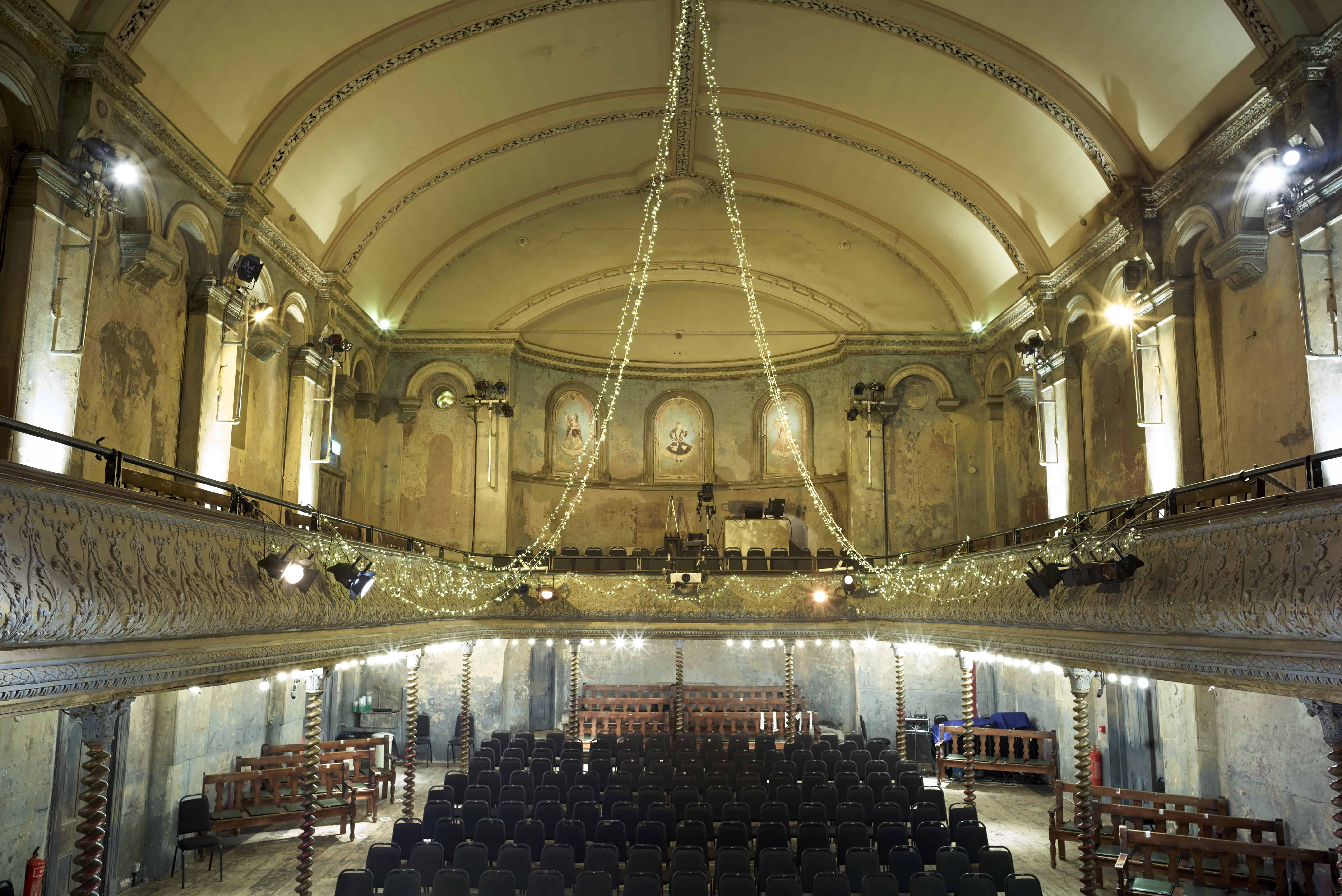
Wilton’s Music Hall is known on its publicity materials as ‘London’s Hidden Stage.’ It’s not hidden terribly well, in that it appears on maps and there are sign-posts to it, but visiting it still has something of the feel of stepping into another world.
To reach it, you turn your back on the ramparts and gates of the Tower of London and its attendant steel and glass towers, and walk along streets where office buildings give way to blocky city car parks and then to older brick commercial buildings, well-worn pubs and corner shops. With an elevated section of the Docklands Light Railway echoing and rumbling on one side, you turn down ‘Grace’s Alley’ (which has the look of a turning that won’t be there the next time you try to find it) and you’re faced with what looks like a row of diminutive terraced houses of old, yellow brick with peeling paintwork on the wooden window-frames, opposite a brick wall topped with a set of railings that are barely holding luxuriant bushes at bay; on the other side of the vegetation are the unmistakable, slightly haunting sounds of a school playground. If you were expecting a grand entrance like a West End theatre, there’s none to be seen. And for a visit to somewhere described as being ‘restored’, nothing looks like it’s in mint condition.
This, it transpires, is the point. Wilton’s, London’s last surviving Victorian Grand Music Hall, has always been hidden; and it’s not its location that’s secret. Starting life as a bar that provided cabaret acts for its clientele of ships’ crews from the nearby docks, it was housed in those Georgian terraces that front Grace’s Alley. In the mid-19th century, the owner of the bar, John Wilton, bought the remaining three houses in the terrace and built a two-level auditorium across the back of the terrace, with the gallery supported by delicate-seeming slender barley-sugar twist columns that are the hall’s most famous features (the twisted exterior conceals wrought-iron cores). Designed to hold 1500 people in what must have been fairly uncomfortable conditions; under today’s regulations, it can seat 300 in safety. There were several such establishments around the docks in Dickens’ time; Wilton’s is the only survivor.
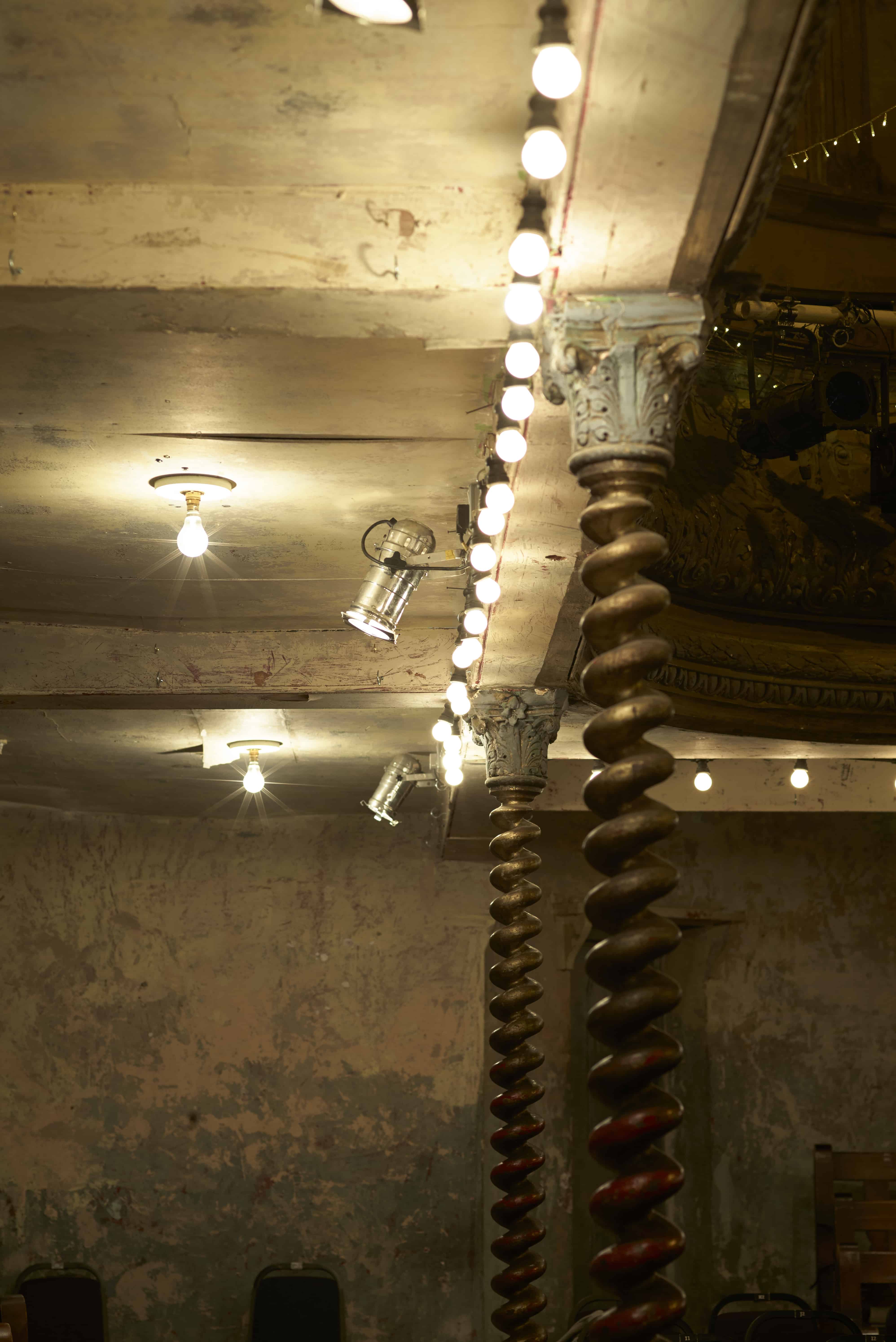
The atmosphere inside the building could be described as ‘charismatic dilapidation.’ Large chunks of plaster are missing, exposing the brickwork especially around the doorways. Walls are stained, staircases have the appearance of being rickety. The floor of the upper level is made from slabs of paving stone, with daylight visible through the gaps. It looks one small step away from being derelict.
Appearance is everything, though. While Wilton’s history is decidedly chequered and it certainly has been in danger of collapse, this is no longer the case. The building as just completed a most unusual plan of restoration that, while leaving it in a more robust state in terms of its structure and facilities than it has probably ever been, has been carefully calculated to leave that raffish decay intact. If it didn’t feel like it was about to fall down around you ears, it wouldn’t be Wilton’s. The result is a decidedly 21st-century building that looks and feels as though it hasn’t been touched since the 19th, and surely escaped the Blitz, the neglect of the old Docklands and the attention of property developers purely by accident.
Wilton’s was a rough place; one particular incident saw a heckler beaten to death by an enraged performer (the judge deemed the victim to have deserved his fate, and the culprit was sentenced to two weeks in prison). Its gas lighting was one of London’s wonders and a key component in its original ventilation system, but this was before the days of health and safety and it may have contributed to its ruin. A catastrophic fire in the 1870s put an end to the Hall’s first incarnation as an entertainment venue; it was a Methodist mission for a while, and later a rag warehouse, before its rediscovery in the 1960s (it was scheduled for demolition, but then-Poet Laureate and architectural historian Sir John Betjemen led a successful campaign to save it). It was listed in 1971, and gradually repaired as necessary simply to stop it falling down.
The current restoration programme, which cost £4million and began in 2006, was a unique civil engineering project because of the precarious nature of the building and the absolute need to keep the atmosphere intact. Led by Tim Ronalds Architects, whose eponymous director had already worked on East End Heritage projects at the Hackney Empire (a very different type of music hall) and the Ironmonger Row baths, and with engineers from the Max Fordham practice whose client roster has included the late Zaha Hadid and refurbishment projects on the Royal Festival Hall and National Museum of Scotland.
“We often hear, when we take people around, 'I thought you said it was refurbished? It doesn’t look like it.' On this project that’s the best possible praise"Luke Winterton, Max Fordham Engineering
“We often hear, when we take people around, ‘I thought you said it was refurbished? It doesn’t look like it,' said Luke Winterton, a multidisciplinary engineer from Max Fordham who worked on the project. “And to be honest, on this project that’s the best possible praise.” All through the project, the key has been to keep the work hidden wherever possible, he said; there are a few places where this has been impossible, notably in the creation of a new studio, dressing-rooms and prop-making workshops, but these are in the end house of the terrace which was largely rebuilt in the 1980s and, in any case, is not open for public access. In all other places where new building was necessary and could not be hidden, it’s very clearly new, with sharp junctions between the wear of decades and clean woodwork. A kitchen in the end house has been designed to have a “vintage” look, with restored light fittings, so that when a window hatch is opened onto Grace’s Alley to serve patrons outside, their view into the kitchen is in keeping with their experience of the rest of the building.
One of the most urgent tasks was to shore up the building’s basement. Although it’s not immediately obvious from its location, Wilton’s is very close to the Thames, and the river water had seeped into the underpinnings. Combined with inadequate roof trusses in the hall that were pushing the walls apart, the effect was that the hall was gradually separating from the houses and effectively beginning a slow slide into the river.
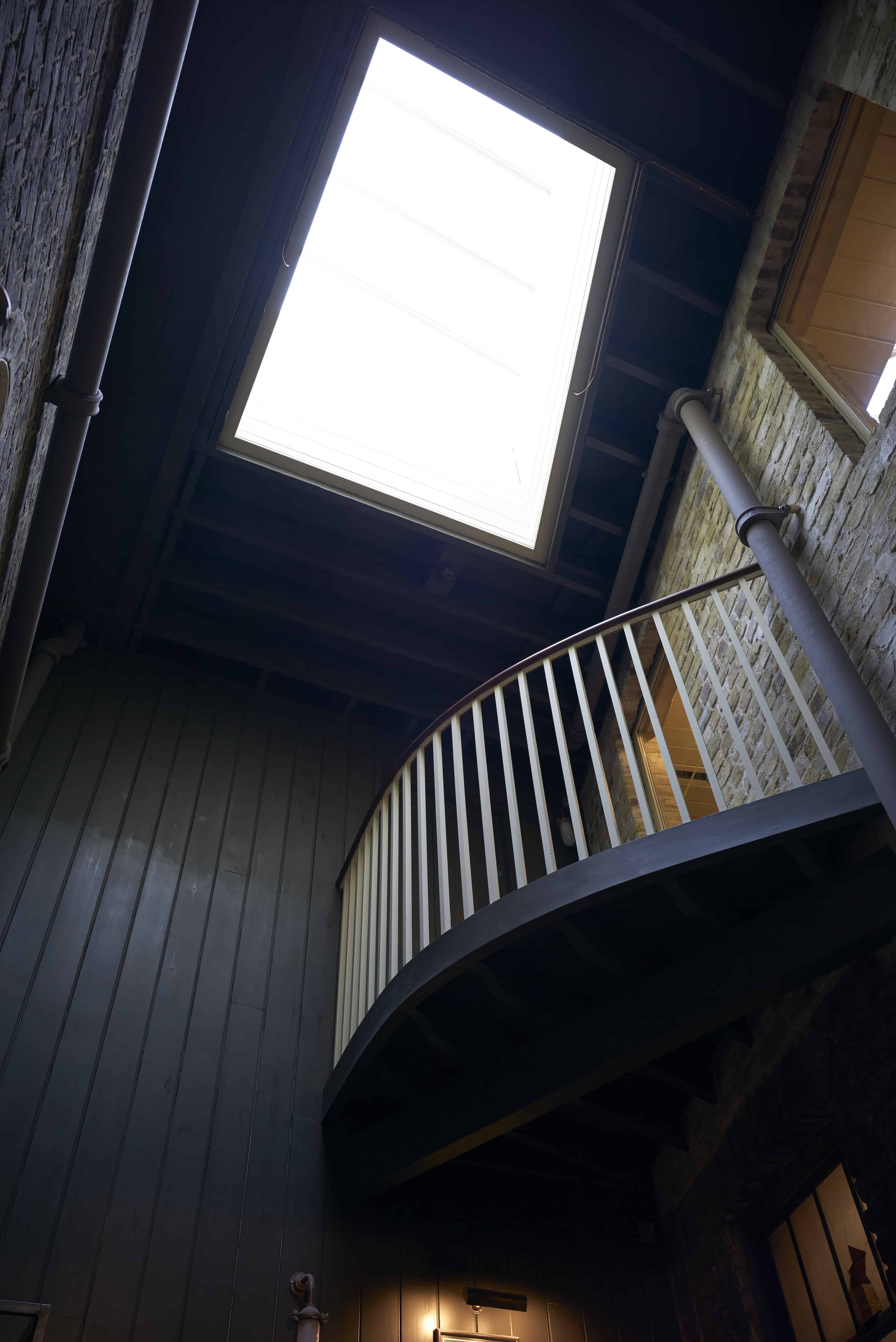
The basement was given a completely new waterproof brick lining and modern plumbing and drainage installed, while walls that didn’t join up were reinforced; where possible, by dowelling any collapsing brickwork rather than rebuilding it. The basement now boasts workrooms and a chilled cellar supplying the building’s main bar – called the Mahogany Bar as it was in the hall’s heyday, as it was the first in London to have mahogany fittings – and a new cocktail bar that has been shoehorned into the upper rooms of the original houses.
“There were all sorts of strange spaces in the building; partly because the original construction w a as makeshift and there have been so many changes,” Winterton told The Engineer. “You’d go through a door and suddenly find yourself in the open air. We wanted to keep that feeling.” Judicious placement of joists and rooflights in the upstairs rooms allowed the engineers to create what feels like a mid-air conservatory, which even has a bar in one corner.
Ventilating the main hall was a considerable challenge, as the heat from all the stage lighting and electrics; not forgetting the warmth and humidity created by 300 members of the audience, all have to be handled. The engineers installed air-handling systems hidden on the roof of the building, and hidden ducting behind the stage that draws hot air away. “It was quite difficult because it’s completely different from the original system,” Winterton said. “There was an enormous gas chandelier with 300 burners hanging over the hall – it was called a ‘sun-burner’ -and the combustion of the gas drew air up into the ceiling where it was vented out through a chimney system. To our sensibilities, very unsafe indeed.”
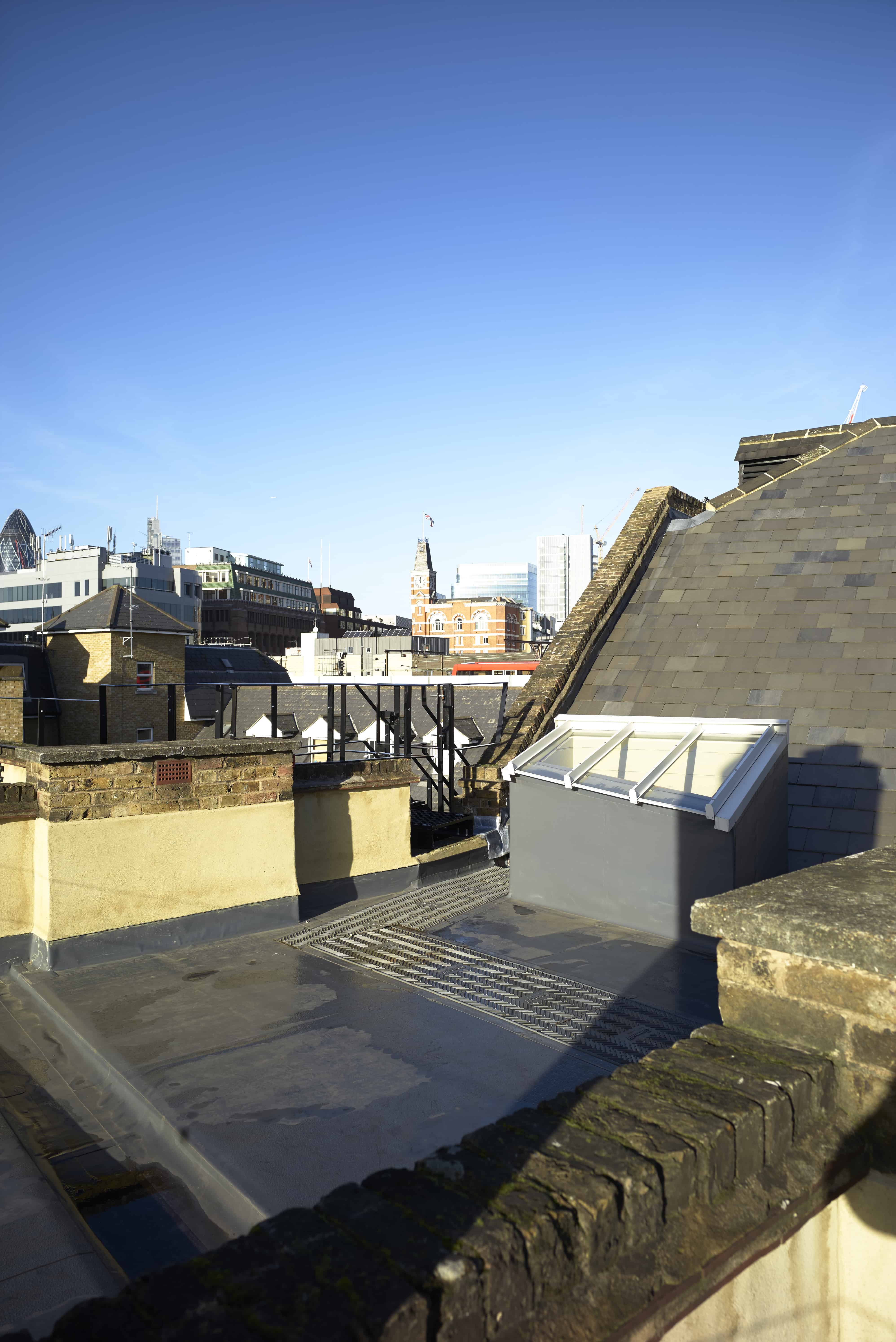
The roof structure did provide one opportunity, Although the hall has a curved barrel-vault ceiling, this sits underneath a more conventional peaked roof whose ridge runs the length of the hall. The space between the ceiling and roof is now packed with soundproofing, so the rumbling of the Docklands Light Railway doesn’t disturb performances.
The original structure also allowed unobtrusive ventilation elsewhere. With new boilers and a modern heating system, the original fireplaces have become the outlets for ventilation shafts in the original houses.
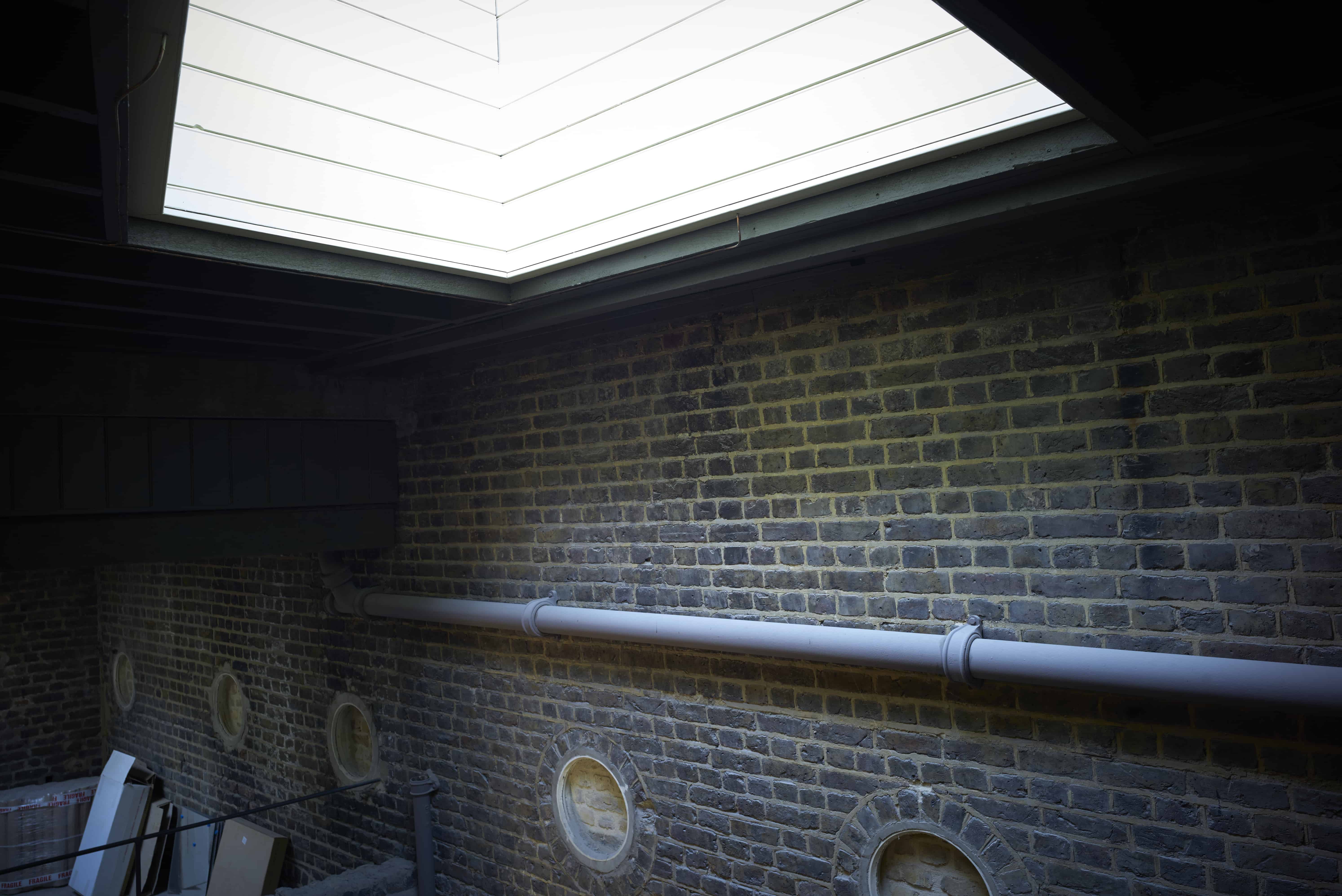
The basement work also allowed voids to be created below the floor of the hall, accessed by trapdoors; these allow wiring for production-specific lighting to be installed unobtrusively. Safety rails on the balcony have an extra level that folds down when not in use and can be used as lighting anchoring points; scaffolding poles in the walls that serve the same function are removable so that, when the hall serves as a location for music video shoots, it appears untouched. Also hidden away is a state-of–the-art fibre optics data system, and an audio-visual system in the terrace house rooms, for more unconventional site-specific performances that are occasionally staged and for live music in the Mahogany and cocktail bars. “The builders were quite confused at points,” Winterton said. “There’s a big patch of damp in the corner of the hall, up by the ceiling, that’s very visible. They asked us if they should fix it and we told them not to touch it.”
Given the inventory list of materials used in the renovation – including 121 skips of debris removed, three tonnes of steel beams, 1000m of reclaimed floorboards, nine tonnes of cement and 15 tonnes of lime plaster, it’s all the more surprising how invisible the work is. There’s only one telltale, if you know where to look; crawling across the walls are bright lines of new copper, which hold mineral-insulated electrical connections. Paced there because of the lack of voids in the walls, they retain a vintage feeling without compromising on services. “Everything possible was preserved,” said architect Tim Ronalds. “Broken fireplaces, chaotic Georgian brickwork, rotten window frames, fragments of plaster; disused roofs; old railway track built into the works in 1859; pulleys and cables from a door bell transmission mechanism, ceramic electrical fittings, pipes for gas lighting, wooden mountings in the wall, holes deemed charming and abandoned birds’ nests.” An incongruous large sink in one corner of the main hall may be a remnant of the days as a Mission. “We don’t know how quite a few features got here,’ Winterton said, “but they tell the story of the building, so we wanted to keep them.”
In one of the upstairs rooms is a short staircase leading to nowhere. You might almost expect a resplendent Victorian actor to appear, all whiskers, velvet and brass buttons. With the hidden modern technology of the restoration, Wilton’s could probably arrange it.




Red Bull makes hydrogen fuel cell play with AVL
Surely EVs are the best solution for motor sports and for weight / performance dispense with the battery altogether by introducing paired conductors...